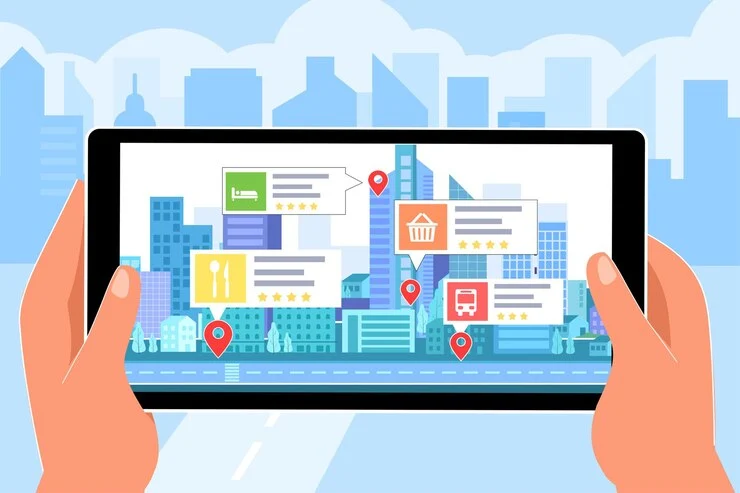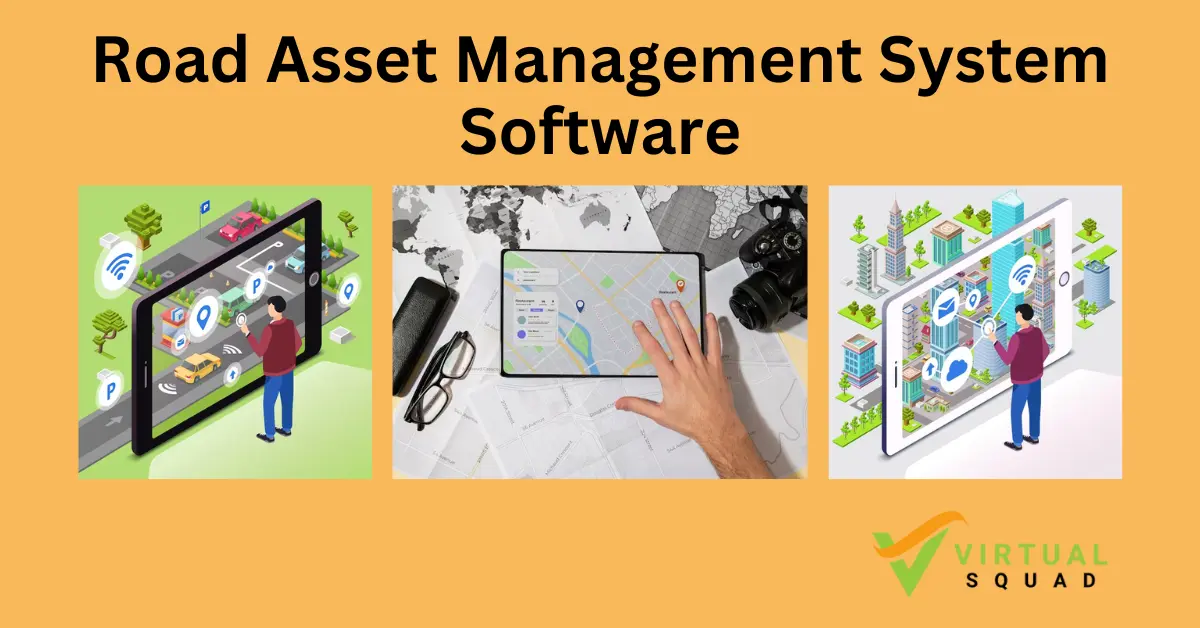Road Asset Management System Software plays a crucial role in efficiently managing and maintaining road infrastructure. As governments and organizations strive to optimize the performance and longevity of road assets, implementing a robust software solution becomes essential. This article provides a comprehensive overview of Road Asset Management System Software, highlighting its key features, benefits, implementation strategies, and case studies. Additionally, it explores best practices for utilizing the software, and discusses future trends and innovations in the field, ultimately emphasizing the importance of adopting advanced tools to streamline road asset management processes.
I. Introduction
1. What is Road Asset Management System Software?
Road Asset Management System Software is a specialized software solution designed to help transportation agencies and organizations efficiently manage and maintain their road assets. It provides a comprehensive platform for tracking and analyzing data related to road infrastructure, including roads, bridges, signs, and more. By using this software, agencies can effectively plan, monitor, and prioritize maintenance and repairs, optimize resource allocation, and make data-driven decisions to ensure the longevity and safety of their road networks.
2. Importance of Road Asset Management System Software
Road Asset Management System Software is of paramount importance for transportation agencies and organizations. With aging road infrastructure and limited budgets, it is crucial to have a system in place that allows for proactive maintenance and efficient allocation of resources. By utilizing this software, agencies can identify and prioritize critical maintenance needs, reduce costly emergency repairs, optimize asset performance, and effectively plan for the future. It helps agencies maximize the value of their road assets, enhance safety for road users, and ultimately improve the overall quality of transportation networks.

II. Overview of Road Asset Management System Software
1. Definition and Scope
Road Asset Management System Software encompasses a range of tools and functionalities designed to support the management and maintenance of road assets. It involves collecting, storing, and analyzing data related to asset conditions, performance, and maintenance history. The software offers a centralized platform to track and manage assets throughout their lifecycle and provides insights for decision-making and resource allocation.
2. Components of Road Asset Management System Software
Road Asset Management System Software typically consists of several components, including asset inventory management, condition assessment, maintenance and repair management, financial analysis, reporting, and decision support. By integrating these components, the software enables agencies to have a holistic view of their road assets and make informed decisions to optimize maintenance strategies and budgets.
3. Common Features and Functionality
Common features of Road Asset Management System Software include data collection and input, asset identification and classification, condition assessment and rating, maintenance scheduling and tracking, financial analysis and budgeting, reporting and visualization tools, and integration capabilities with other systems and data sources. These features help streamline operations, improve efficiency, and enhance decision-making for road asset management.

III. Key Features and Benefits
1. Asset Inventory and Condition Assessment
Road Asset Management System Software allows agencies to develop and maintain a comprehensive inventory of their road assets, including detailed information on each asset’s location, characteristics, and condition. It enables condition assessments and rating, which helps prioritise maintenance and repairs based on asset conditions, ensuring the efficient allocation of resources.
2. Maintenance and Repair Management
The software assists in planning, scheduling, and tracking routine maintenance activities as well as repairs and rehabilitation projects. It helps agencies optimize maintenance strategies, ensure timely interventions, and reduce costly emergency repairs. By having a proactive maintenance approach, agencies can extend the lifespan of their road assets and improve overall network performance.
3. Cost and Performance Analysis
With Road Asset Management System Software, agencies can analyze the cost and performance of their road assets. It provides tools for financial analysis, budgeting, and forecasting, allowing agencies to make informed decisions by considering the financial implications of different maintenance strategies and investment options. This analysis helps optimize resource allocation and ensure the most cost-effective use of available funds.
4. Reporting and Decision Support
The software offers robust reporting capabilities, generating graphical and tabular reports to visualize asset conditions, maintenance activities, financial performance, and more. These reports help agencies communicate asset management insights to stakeholders and decision-makers, facilitating data-driven decision-making and facilitating transparency.

IV. Implementation and Integration
1. Choosing the Right Road Asset Management System Software
When selecting Road Asset Management System Software, agencies should consider factors such as ease of use, scalability, compatibility with existing systems, customization options, and vendor support. It is vital to choose a software solution that aligns with the agency’s specific needs and requirements to ensure a successful implementation.
2. Implementing the Software in Existing Infrastructure
Implementing Road Asset Management System Software involves the process of integrating the software into existing infrastructure and workflows. This may include data migration, system configuration, user training, and change management. A well-planned implementation strategy is essential to minimize disruptions and maximize the software’s effectiveness in supporting road asset management.
3. Integration with Other Systems and Data Sources
To achieve a comprehensive view of road asset management, it is crucial for the software to integrate with other systems and data sources, such as Geographic Information Systems (GIS), Enterprise Asset Management (EAM) systems, and pavement management systems. Integration allows for data exchange, synchronization, and interoperability, enabling agencies to leverage existing data sources and streamline their asset management processes.

V. Case Studies and Success Stories
1. City X: Transforming Road Asset Management with Software Solution
In City X, the local government faced numerous challenges in managing its road assets effectively. Potholes, cracks, and other road defects were causing frustration among residents, resulting in increased maintenance costs. However, with the implementation of a road management system software, the city experienced a remarkable transformation. The software allowed them to track and priorities road maintenance needs, allocate resources efficiently, and ensure timely repairs. The result? Happier residents, reduced maintenance costs, and smoother roads for everyone.
2. Municipality Y: Achieving Cost Savings and Improved Efficiency
Municipality Y had been struggling with budget constraints and the need to stretch every dollar as far as possible. They turned to a road asset management system software to optimise their resources and improve efficiency. By utilising the software’s asset condition assessment tools, the municipality was able to identify areas that required immediate attention and prioritise maintenance activities accordingly. This proactive approach not only saved costs but also extended the lifespan of their road assets, leading to long-term savings and improved overall efficiency.
3. Highway Department Z: Enhancing Road Safety through Effective Management
Ensuring road safety is a top priority for Highway Department Z. They recognized the importance of proactive asset management to prevent accidents and reduce risks on their highways. By implementing a road asset management system software, the department gained better visibility into their road network and effectively planned maintenance and safety measures. Through timely inspections, predictive maintenance, and data-driven decision-making, Highway Department Z significantly enhanced road safety, minimizing accidents and promoting safer travel for all.

VI. Best Practices for Utilising Road Asset Management System Software
1. Establishing a Robust Data Management Strategy
To fully leverage the benefits of road asset management system software, it is crucial to establish a solid data management strategy. This includes ensuring accurate data collection, organizing data in a structured manner, and regularly updating and maintaining the database. A robust data management strategy provides a strong foundation for effective decision-making and ensures the software operates optimally.
2. Streamlining Workflows and Collaboration
Efficient workflows and collaboration are key to maximising the value of road asset management system software. By streamlining processes, automating tasks, and fostering collaboration among various departments and stakeholders, organisations can enhance productivity and eliminate bottlenecks. This ensures a seamless flow of information and enables timely decision-making based on real-time data.
3. Regular Training and Skill Development
To fully utilize the potential of road asset management system software. It is important to invest in regular training and skill development for employees. Providing comprehensive training on how to use the software effectively will empower staff to make informed decisions. Optimize asset maintenance strategies, and troubleshoot any issues that may arise. Ongoing skill development ensures that organizations stay up-to-date with the latest software features and industry best practices.

VII. Future Trends and Innovations
1. Advancements in Data Analytics and Predictive Maintenance
As technology continues to evolve, road management system software is expected to witness advancements in data analytics and predictive maintenance capabilities. Advanced data analytics algorithms will enable organizations to extract valuable insights from large datasets, aiding in proactive decision-making. Predictive maintenance models will also become more sophisticated, allowing for optimized asset maintenance schedules based on real-time performance data.
2. Integration of Internet of Things (IoT) for Real-time Monitoring
The integration of Internet of Things (IoT) technologies is set to revolutionize road asset management. IoT devices embedded in roads and vehicles will facilitate real-time monitoring of asset conditions, traffic patterns, and environmental factors. This data will be seamlessly integrated with road management system software. Enabling organizations to make data-driven decisions and respond rapidly to emerging issues, such as traffic congestion or inclement weather conditions.
3. Embracing Artificial Intelligence and Machine Learning
Artificial Intelligence (AI) and Machine Learning (ML) will play a significant role in shaping the future of road asset management system software. AI-powered algorithms will enhance data interpretation and analysis, enabling organizations to make more accurate predictions and optimize resource allocation. ML algorithms will continuously learn and improve based on historical and real-time data, providing valuable insights for decision-making and improving overall system performance.

VIII. Conclusion
Implementing Road Management System Software is becoming increasingly crucial in effectively managing road infrastructure. By leveraging the features and benefits offered by these software solutions. Governments and organizations can enhance asset inventory, streamline maintenance processes, optimize cost and performance analysis, and make data-driven decisions. As technology continues to advance, embracing future trends such as data analytics, IoT integration, and AI will further revolutionize road asset management. By staying ahead of the curve and adopting these innovative tools, stakeholders can ensure safer, more efficient, and sustainable road networks for the benefit of communities and economies alike.
FAQ
1. What is Road Management System Software?
Road Management System Software is a specialized software solution designed to help manage and maintain road infrastructure effectively. It provides a comprehensive set of tools and functionalities to streamline asset inventory, condition assessment, maintenance planning, cost analysis, and decision-making processes.
2. How can Road Management System Software benefit governments and organizations?
Road Management System Software offers numerous benefits. Including improved asset visibility, enhanced maintenance and repair management, optimized resource allocation, better cost control, and data-driven decision making. It helps governments and organizations maximize the lifespan and performance of road assets, resulting in safer and more efficient road networks.
3. How should one choose the right Road Asset Management System Software?
Choosing the right Road Management System Software requires careful consideration of factors. Such as the specific needs and goals of the organization, scalability, user-friendliness, integration capabilities with existing systems, support and training, and cost-effectiveness. It is crucial to evaluate different software options, request demos, and consider feedback from other users or organizations with similar requirements.
4. Are there any future trends in the field of Road Management System Software?
Yes, the field of Road Management System Software is continuously evolving. Future trends include advancements in data analytics and predictive maintenance, integration of Internet of Things (IoT) for real-time monitoring of road assets, and the adoption of artificial intelligence and machine learning technologies to automate processes, improve decision-making, and enhance overall efficiency in managing road infrastructure.






